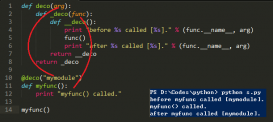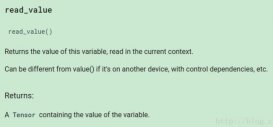本文实例讲述了python实现中文分词FMM算法。分享给大家供大家参考。具体分析如下:
FMM算法的最简单思想是使用贪心算法向前找n个,如果这n个组成的词在词典中出现,就ok,如果没有出现,那么找n-1个...然后继续下去。假如n个词在词典中出现,那么从n+1位置继续找下去,直到句子结束。
|
1
2
3
4
5
6
7
8
9
10
11
12
13
14
15
16
17
18
19
20
21
22
23
24
25
26
27
28
29
30
31
32
33
34
35
36
37
38
39
40
41
42
43
44
45
46
47
48
49
50
51
52
53
54
55
56
57
58
59
60
61
62
63
64
65
66
|
import re def PreProcess(sentence,edcode="utf-8"): sentence = sentence.decode(edcode) sentence=re.sub(u"[。,,!……!《》<>\"'::?\?、\|“”‘';]"," ",sentence) return sentence def FMM(sentence,diction,result = [],maxwordLength = 4,edcode="utf-8"): i = 0 sentence = PreProcess(sentence,edcode) length = len(sentence) while i < length: # find the ascii word tempi=i tok=sentence[i:i+1] while re.search("[0-9A-Za-z\-\+#@_\.]{1}",tok)<>None: i= i+1 tok=sentence[i:i+1] if i-tempi>0: result.append(sentence[tempi:i].lower().encode(edcode)) # find chinese word left = len(sentence[i:]) if left == 1: """go to 4 step over the FMM""" """should we add the last one? Yes, if not blank""" if sentence[i:] <> " ": result.append(sentence[i:].encode(edcode)) return result m = min(left,maxwordLength) for j in xrange(m,0,-1): leftword = sentence[i:j+i].encode(edcode) # print leftword.decode(edcode) if LookUp(leftword,diction): # find the left word in dictionary # it's the right one i = j+i result.append(leftword) break elif j == 1: """only one word, add into result, if not blank""" if leftword.decode(edcode) <> " ": result.append(leftword) i = i+1 else: continue return result def LookUp(word,dictionary): if dictionary.has_key(word): return True return Falsedef ConvertGBKtoUTF(sentence): return sentence.decode('gbk').encode('utf-8')dictions = {} dictions["ab"] = 1dictions["cd"] = 2dictions["abc"] = 1dictions["ss"] = 1dictions[ConvertGBKtoUTF("好的")] = 1dictions[ConvertGBKtoUTF("真的")] = 1sentence = "asdfa好的是这样吗vasdiw呀真的daf dasfiw asid是吗?"s = FMM(ConvertGBKtoUTF(sentence),dictions) for i in s: print i.decode("utf-8")test = open("test.txt","r") for line in test: s = FMM(CovertGBKtoUTF(line),dictions) for i in s: print i.decode("utf-8") |
运行结果如下:
asdfa
好的
是
这
样
吗
vasdiw
呀
真的
daf
dasfiw
asid
是
吗
?
希望本文所述对大家的Python程序设计有所帮助。












